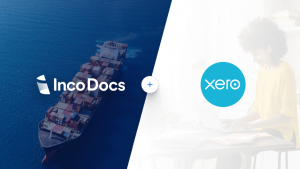Trade finance is a set of financial tools and services designed to simplify and secure cross-border trade. It helps businesses navigate the risks and complexities of international transactions while building trust between buyers and sellers.
In this article, we’ll explain what trade finance is, how it works, and why it’s a crucial part of global trade. We’ll also explore common trade finance tools and how they help businesses grow and succeed in international markets.
What is Trade Finance?
Trade finance encompasses a range of financial instruments and services designed to facilitate international trade by reducing risks and addressing funding gaps for both importers and exporters. It ensures that transactions proceed smoothly by mitigating risks such as non-payment or non-delivery.
Banks, financial institutions, and trade finance companies are key players, providing solutions tailored to the needs of global trade. For exporters, trade finance guarantees payment according to agreed terms. For importers, it offers credit facilities to help fund purchases or manage working capital. Tools like letters of credit, trade guarantees, and invoice financing are commonly used to secure transactions and foster trust between trading partners.
The World Trade Organization estimates that 80% to 90% of global trade relies on trade finance, highlighting its essential role in enabling international commerce and maintaining the flow of goods and services worldwide.
How does Trade Finance Work?
Trade finance is used by importers, exporters, and financial institutions to facilitate secure and efficient transactions. When an importer places an order, they may use trade finance solutions, such as credit facilities or letters of credit, to fund the purchase and guarantee payment to the exporter.
Letters of credit are particularly common, ensuring that the exporter receives payment once the agreed-upon conditions—such as proof of shipment or delivery—are met. These tools reduce the financial risks for both parties, such as non-payment or non-delivery, making trade more predictable and reliable.
By using trade finance, companies can free up working capital, minimize risks, and focus on scaling their operations and managing other aspects of their business.
Types of Trade Finance
Letters of Credit
A letter of credit is a document issued by a bank to guarantee payment to the seller once specific terms and conditions are met. It ensures exporters are paid as agreed, minimizing the risk of non-payment. Importers benefit as their payment is only made when the seller fulfills the contract, creating a secure and trustworthy trade process.
Bank Guarantees
A bank guarantee is a financial commitment provided by a bank, ensuring that if a party involved in a transaction fails to meet their contractual obligations, the bank will cover the financial loss. This mechanism offers security to both buyers and sellers, fostering trust by mitigating the risk of payment default. It acts as a safeguard for transactions, especially in industries where large sums or cross-border trade are involved.
Factoring
Factoring is a financial arrangement where businesses sell their accounts receivable (invoices) to a third party, called a factor, at a discounted rate. This provides businesses, particularly exporters, with immediate cash flow instead of waiting for customers to settle their payments. By accessing funds upfront, companies can maintain smooth operations, invest in growth, or meet pressing financial needs without relying solely on buyer payment timelines.
Export Credit
Export credit allows buyers to purchase goods or services on credit, enabling them to defer payment over an agreed period. Often backed by export credit agencies (ECAs) or financial institutions, this arrangement provides flexibility for buyers while ensuring exporters receive timely payments, either through upfront financing or guaranteed coverage. This system helps exporters maintain steady cash flow and reduces financial risks, fostering smoother international trade transactions.
Forfaiting
Forfaiting is a financial solution similar to factoring, but it is typically used for larger, long-term international trade transactions. Exporters sell their receivables (promissory notes or bills of exchange) to a forfaiter at a discount, transferring the payment collection risk entirely to the forfaiter. This allows exporters to receive immediate cash, eliminating credit and political risks associated with cross-border trade, so they can focus on their core business operations without concerns over delayed or non-payments.
Trade Credit Insurance
Trade credit insurance safeguards exporters against financial losses arising from risks such as buyer defaults, insolvency, or non-payment due to political instability. By covering these potential losses, this insurance provides exporters with peace of mind and greater confidence when extending credit to buyers. It is a vital risk management tool in international trade, ensuring exporters maintain financial stability and protect their cash flow, even in uncertain or volatile markets.
Benefits of Trade Finance
Risk Reduction
Tools like letters of credit reduce the chance of non-payment for exporters. Importers are also protected as payments are only made when the seller meets agreed conditions. This builds trust and makes transactions secure.
Improved Cash Flow
Factoring and forfaiting help businesses get cash quickly by selling receivables. These options ensure companies can keep running without delays caused by unpaid invoices.
Global Expansion
With financial support, businesses can reach new markets. Export credit lets buyers delay payments, allowing sellers to grow their customer base without cash flow worries.
Larger Orders
Funding through trade finance enables companies to accept larger orders. This opens the door to more revenue and new business opportunities.
Operational Stability
Reliable trade finance solutions keep cross-border transactions smooth. Businesses can focus on growth instead of worrying about payment risks or delays. This clear support helps companies thrive in global trade, tackling risks while unlocking new possibilities.
Challenges and Risks
Non-Payment
One of the biggest risks is non-payment. This happens when buyers default or go bankrupt. Exporters can lose money, and importers may face financial trouble too.
Currency Fluctuations
Exchange rates can change quickly. This can reduce profits and make trade less predictable. Businesses need accurate planning to avoid these losses.
Political Instability
Unstable governments or conflicts can disrupt trade. This may delay shipments or affect supply chains. Companies need to stay aware of these risks in trading countries.
Regulatory Complexity
Every country has different trade rules. Understanding and following these can be challenging. Businesses often need experts to help meet these requirements like custom brokers or freight forwarders.
High Costs
Trade finance can be expensive. Fees and interest rates add up and lower profits. Companies need to balance these costs with their trade goals.
Risk Management
Strategies like trade credit insurance can help reduce risks. Regular reviews of financial tools and market trends are also important. These steps ensure businesses stay secure and profitable.
Real-World Example of Trade Finance

Imagine a US exporter receiving a large order from a buyer in another country. To complete this order, the exporter needs to buy materials and cover production costs upfront. Without immediate funds, this could be a challenge.
Using trade finance, the buyer’s bank provides a letter of credit. This guarantees payment once the goods are shipped. With this assurance, the exporter can approach their bank for pre-shipment financing. The bank provides the funds needed for production.
After the goods are shipped and the documents are submitted, the bank pays the exporter. This ensures the exporter has the cash flow to keep operating. The buyer also benefits, knowing their payment will only be released once the order is fulfilled.
This example shows how trade finance helps both sides. Exporters get the funds they need, and importers gain confidence in the transaction.
FAQs
What is the difference between Trade Finance and Supply Chain Finance
Trade finance and supply chain finance serve different purposes in global commerce. Supply chain finance focuses on optimizing cash flow for buyers and suppliers within the supply chain. It allows suppliers to receive early payments while giving buyers extended time to settle invoices. This ensures smooth operations without disrupting cash flow on either side.
In contrast, trade finance addresses the financial risks and complexities of cross-border trade. It provides tools to ensure secure payments and reduce uncertainties in international transactions. While trade finance safeguards individual trade deals, supply chain finance supports ongoing business relationships by improving liquidity across the supply chain.
What is the difference between letters of credit and invoice factoring?
A letter of credit is a financial document issued by a bank to guarantee payment to a seller once agreed conditions are met. It is widely used in international trade to reduce the risk of non-payment. This ensures that the buyer’s payment is only released when the seller fulfills the terms, such as shipping goods or providing required documentation like a bill of lading.
Invoice factoring is focused on cash flow management. It involves selling unpaid invoices to a third party, known as a factor, at a discount. This allows businesses to access funds immediately without waiting for customers to pay. While letters of credit secure payment for future transactions, factoring provides quick cash from existing invoices, catering to different financial needs.
How does trade finance benefit SMEs?
Trade finance gives SMEs the working capital they need for international trade. It offers solutions like letters of credit and factoring to reduce payment risks and improve cash flow. With this support, SMEs can take on larger orders, grow their operations, and compete globally.
By using trade finance, SMEs can build trust with foreign buyers and manage risks tied to cross-border transactions. Services like trade credit insurance further protect them from potential losses, enabling these businesses to explore new markets with greater confidence.
What are the Risks of Open Accounts for Exporters?
Open accounts put exporters at a higher risk of non-payment. Since goods are shipped before payment is made, buyers may delay or fail to pay altogether. This risk increases when dealing with new or unknown buyers, especially in countries with weak legal enforcement or unstable economies.
Exporters also face cash flow challenges. Payment delays can leave them short on funds to cover operating costs or future orders. Without financial safeguards like trade credit insurance, these risks can impact profitability and business stability.







